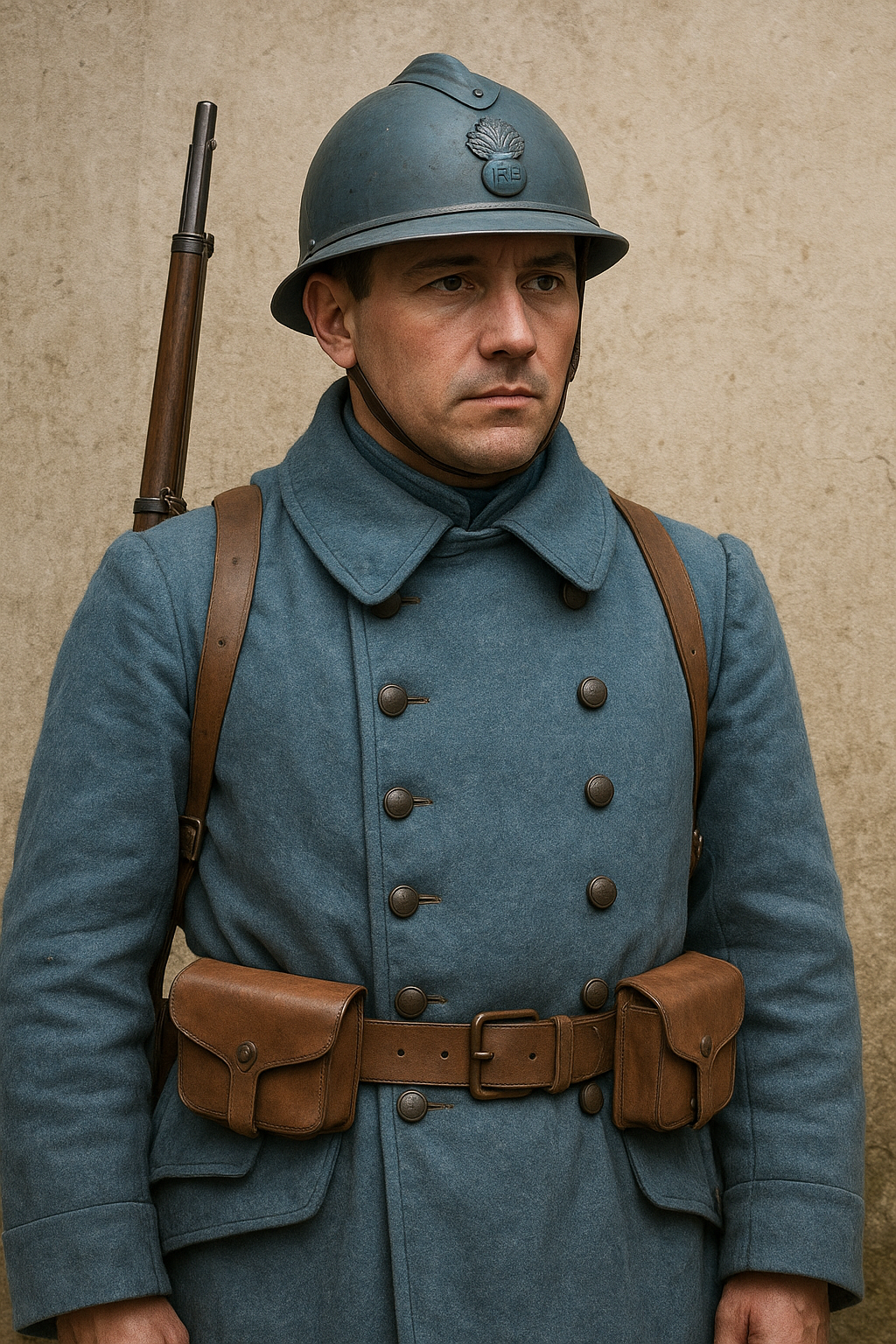
World War 1 United States Uniforms: A Detailed Collector's & Historian’s Guide
Published on Sep 22, 2025
🪖 World War 1 United States Uniforms: A Detailed Collector’s & Historian’s Guide
Did you know the average American Doughboy’s wool uniform was not only itchy but often carried lice that outlasted the trenches?
That’s just one gritty detail in the fascinating world of World War 1 United States uniforms, a topic that continues to intrigue history buffs, reenactors, collectors, and military enthusiasts.
In this comprehensive guide, you’ll dive into:
- The evolution of the US military uniforms during WWI
- Tips for identifying authentic pieces, like the uniform patch that World War 1 United States soldiers wore
- How today’s collectors and reenactors are keeping history alive
- And actionable steps for beginners to avoid common pitfalls
Let’s gear up.
🧥 The Anatomy of WW1 United States Uniforms
World War 1 marked a dramatic shift in how military uniforms were designed, issued, and perceived. Unlike the colorful and decorative outfits of previous wars, the WW1 American uniform prioritized functionality, camouflage, and mass production.
🔍 Key Components of the WW1 American Uniform:
- M1912 Service Coat (Tunic)
- Made of wool serge
- Four-pocket design
- Often featured unit-specific uniform patches of World War 1 United States divisions (like the 1st Infantry or Rainbow Division)
- M1912 Trousers
- Also wool serge
- Worn with puttees (wool wraps around lower legs) or canvas leggings
- Service Hat ("Montana Peak")
- Also known as the "Campaign Hat"
- Stiff-brimmed felt hat with high crown.
- M1917 Helmet
- Modeled after the British Brodie helmet
- Worn by USUS troops from 1917 onward
- Footwear
- Leather hobnail boots (durable, heavy)
- Socks were thick wool—crucial for trench foot prevention.
- United States Army Dress Uniforms World War 1
- Worn primarily for ceremonial or non-combat occasions
- Often, cleaner, sharper versions of the field uniforms with more emphasis on insignia and decoration
🧵 Uniform Patch World War 1 United States: What to Look For
Patches on WW1 uniforms are one of the most collectible and informative features. Here's how to identify and evaluate them:
- Shape & Design: Most were simple shapes like squares, diamonds, and circles
- Color: Each Division had distinct color schemes—the 1st Division often had a red numeral "1"
- Placement: Worn on the upper arms; some units had left and right variations.
- Materials: Wool-on-wool or felt; stitching was hand-done or early machine work
Pro Tip: Use unit history books and museum archives to verify authenticity. Fakes often have modern stitching or incorrect backing.
🧰 How to Start Collecting WW1 American Uniforms
Whether you’re new to collecting or expanding your historical wardrobe for reenactments, this step-by-step guide helps you get started.
✅ Actionable Steps for Beginners
- Start With Research
- Read books like “Uniforms of the American Expeditionary Forces in World War I”
- Join forums and online communities (e.g., Reddit’s r/MilitaryCollectors)
- Know What You’re Looking For
- Are you collecting for display, reenactment, or resale?
- Choose between field wear vs. United States Army dress uniforms, World War 1
- Buy from Reputable Sources
- Reenactment suppliers like What Price Glory
- Auction houses like Heritage or Bonhams
- Online marketplaces (but watch out for fakes!)
- Learn How to Authenticate
- Check for original stitching.
- Smell the fabric (seriously—old wool has a distinct scent)
- Research the uniform patch of World War 1, the United States, for each Division Division Division Division Division Division Division Division Division Division Division Division Division Division Division Division.
- Store and Preserve Properly
- Keep uniforms in climate-controlled environments.
- Use acid-free garment bags.
- Avoid direct sunlight and humidity.
⚠️ Common Pitfalls to Avoid
- Assuming all wool is WW1: WW2 wool looks similar, but usually has tags or differences in cut
- Buying “perfect” pieces: Most genuine WW1 gear will show wear, moth holes, or field damage
- Overpaying for patched uniforms: A patch can increase value, but provenance is everything
🔄 From WW1 to WW2: How Uniforms Evolved
While our focus is on WW1, understanding the contrast with World War II American uniforms helps put things into perspective.
Feature WW1 Uniform (1917-1918)WW2 Uniform (1939-1945)
Material: Heavy wool serge, Lighter wool & cotton blends
Helmet M1917 Brodie Helmet M1 Steel Helmet
Design Philosophy: Function over form, Mass production + modernization
Dress Uniforms: Dark olive drab, tailored Khaki and Class A/B variations
Identification Patches Unit-specific wool patches Printed or embroidered shoulder insignia
Takeaway: The WW1 American uniform was transitional, bridging the formality of the 19th century with the industrial practicality of the 20th.
🔥 Current Trends in WW1 Uniform Collecting & Reenactment
As more WW1 veterans have passed on and centennials have reignited interest, there’s been a resurgence in preserving and wearing these uniforms.
💡 Popular Trends Today:
- WW1 reenactment groups like the Great War Association are gaining members
- Increased demand for complete uniforms with patches and gear
- Rising prices for United States Army dress uniforms from World War 1 in pristine condition.
- Replica market booming—perfect for beginners before diving into originals.
- TikTok and YouTube channels are bringing WW1 military fashion into modern pop culture.
🎯 Conclusion: Wear History With Purpose
The story of World War 1 United States uniforms is more than just fabric and stitches—it’s a reflection of how America transformed from an isolationist country to a global power.
Whether you’re:
- Collecting original patches,
- Reenacting at historical events,
- Or just deepening your knowledge of military gear,
There’s a rich field of history waiting for you.
How WW1 uniforms balanced practicality with emerging military identity.
